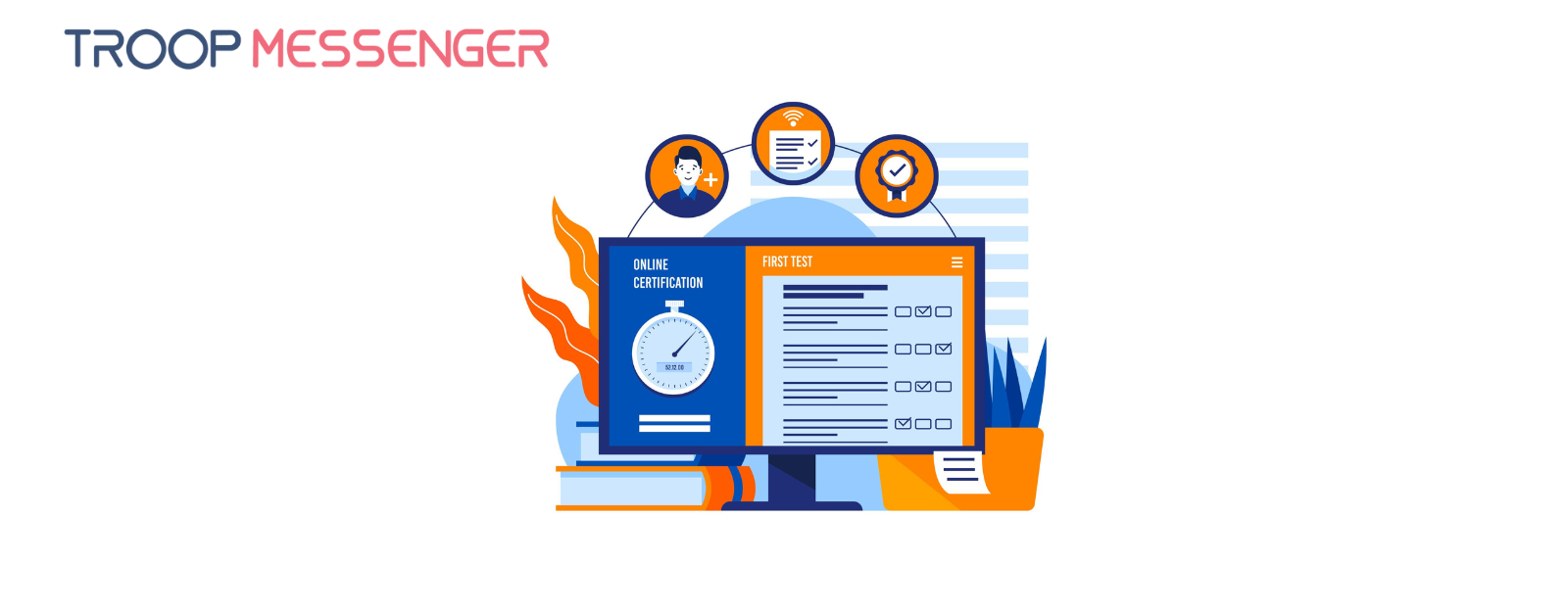Connect with us

Expanding Your Team Collaboration Toolbox: Key Drivers of Adoption
Teams are changing. So you need a collaboration toolbox to help teams change in the right way and make the best adjustments at the right time.
The reasons teams are changing are COVID-19 and the technological and cultural changes it brought with it. Teams are no longer office-based. They are hybrid or distributed across different sites, making effective collaboration tools more crucial than ever.
It’s also not just about the tools you invest in, but the quantity and how you use them. Overload of collaboration tools will overwhelm staff, and underutilization will not lead to ROI and can decrease communication.
That’s what this article deals with: How to drive effective adoption, not just how to procure the right tools you want your staff to use.
Core Challenges Teams Face with New Collaboration Tools
Collaboration is crucial to a successful organization, especially when teams are spread across one state, states, or the globe. But this collaboration doesn’t come easy. The good news is that there are patterns in the challenges teams face when they begin to use collaboration tools. Consider how these challenges will apply to your organization and tackle them one by one.
Tool Fatigue and Context Switching
Collaboration should feel free, natural, and easy. But it won’t feel this way if you overload teams with too many platforms, all competing with each other for employees’ attention. Instead of the intended increases in productivity, it will drain any productivity that employees want to maintain because it will be so stressful switching between tools.
The cognitive load of this situation cannot be overstated, as the burden is huge when
employees have to switch tools based on the context of each task.
Lack of Unified Onboarding and Training
Another huge challenge is the lack of onboarding that needs to happen, but often doesn’t happen when teams are given new collaboration tools. Onboarding sets teams up all at the same time, creating a strong foundation for working together using these new tools.
Training should include change management techniques to help employees adjust and take their pain points into consideration. After all, asking a team to change how they communicate can create huge amounts of resistance to change that can derail progress and create a resentful us/them culture between team members and managers.
These approaches help address and avoid skill gaps and inconsistent usage across teams.
Characteristics of High-Adoption Collaboration Tools
When you’ve understood the challenges you’re likely to face and planned how to tackle them, it’s time to consider the characteristics of the tools you want to invest in. You can use these characteristics as a checklist when shopping for a new collaborative tool to ensure you get the tools that work for the organization and your teams.
Intuitive User Interface and UX
The first feature you need is an intuitive user interface for a smooth, streamlined user experience (UX). If this feature is in place, everything else will move smoothly for a fast, effective adoption because employees want collaboration to be easy, fast, and fun. An easy-to-use user interface cuts out a lot of the onboarding and training needs, as employees may work out how to use the tool independently.
Always check reviews for mentions of an intuitive user interface and UX.
Integration with Existing Workflows
Your new tool will not exist in isolation. It will need to work alongside your existing tech stack, so its crucial to ensure it integrates with the tools you currently use. If not, it will not be accepted by employees because they will have to switch between tools just to communicate with colleagues. They will be less likely to communicate well if the tools you give them are separate from the tools they already use.
Look out for integration with tools you currently utilize, such as Slack, Google Workspace, and Jira.
Flexibility for Cross-Functional Teams
Collaboration can be complex because it often involves different teams with different disciplines needing to communicate frequently as they work toward the same goals.
The key here is to look for customizability options when you are looking for a new tool. This option speeds up adoption because different teams can adjust the tool to their needs while using it to communicate with other teams in their organization.
A company launching a new product needs marketing, engineering, and sales to be aligned. Using collaboration tools ensures accurate updates, prevents miscommunication, and supports a smooth, coordinated launch across teams.
The Role of Leadership and Culture in Tool Adoption
Adoption is complex, with many elements leading to successful, fast adoption that sticks. One of these aspects is the top-down adoption approach coordinated and role-modelled by leadership.
The first way for leaders to model how to use a new tool is to use it themselves. If they communicate and role-model their excitement and engagement with a new tool, by sharing new features they notice, their excitement will spread amongst the different levels. This approach promotes positive feelings and engagement toward new collaboration tools within a culture of transparency and accountability.
Digital Adoption Strategies That Actually Work
Your next step needs to be developing an airtight strategy to make the digital adoption work not just today, but years into the future. The first step is to embed the training for the new tools within the workflow, allowing employees to train as they work.
Embedding Training Within the Workflow
Embedding training deep into the way employees work allows learning to be seamless, fast, and engaging. As opposed to requesting staff to attend separate training that takes extra time, it’s more efficient and natural to encourage staff to use a new tool immediately as part of their everyday activities.
This approach eliminates procrastination and gets staff stuck in immediately, using in-app guidance, tooltips, and interactive walkthroughs that give a 1:1, hands-on experience with a new tool. Contextual learning will always outperform one-off training because employees can see their personal pain points and address them with management quickly.
Leveraging Analytics to Identify Friction Points
You’ll want to collect data to understand the progress you’re making with supporting the adoption of your new tool for collaboration. Do so by leveraging usage data analytics for success factors like satisfaction, frequency of use, and, crucially, friction points that employees are experiencing.
You’ll want to collect data to understand the progress you’re making with supporting the adoption of your new tool for collaboration. Do so by leveraging usage data analytics for success factors like satisfaction, frequency of use, and, crucially, friction points that employees are experiencing.
Once you have identified these pain points, address them with management and the vendor to understand how you can adjust the way employees use the tool and hit ROI as fast as possible.
Utilize the Best Digital Adoption Resources
Other resources can be heaven-sent when trying to support your staff to adopt a new tool for communication and collaboration. Sites like digital-adoption.com offer many perspectives on digital adoption you may not have thought important. Some of the latest blog articles cover digital adoption podcast listicles, AI tools, and a variety of other tools for different purposes.
The site has something for every occasion and will support teams of any size and type to adopt new tools using guidance for how to embed scalable training, measure adoption metrics, and personalize onboarding experiences.
Aligning Tools with Business Objectives
The final question you need to ask yourself before signing up for a year’s subscription to a new tool is: Does this collaboration tool align with our business objectives?
Collaboration tools are there to reinforce and not detract from the overarching strategic goals of an organization. So it’s crucial to consider this before jumping into an agreement to sign your life away to a new tool that uses powerful AI technologies but doesn’t fit with what your organization is trying to achieve.
If you’re trying to shoehorn in project management tools to align KPIs or use collaboration platforms to reduce meeting overload, you need to reconsider what you are buying into and whether you need to make a different choice.
Future Trends in Collaboration and Adoption
We are likely to see a few different trends in the coming years for collaboration and adoption.
The first is AI-powered collaboration assistants. Agentic AI will become personal assistants for employees that communicate with colleagues without human staff having to type messages, but will be tailored to the style of the user based on previous messages.
The second trend will be asynchronous-first workflows. This trend, of employees working when they choose to optimize their efficiency, is already happening, but it will be more common in the future. It improves employee well-being through better work-life balance.
These two technologies will fit well with the third, which is cross-border, multi-lingual teams and new tools that will need to support them across the globe.
All these trends will need rapid adoption approaches to make them bed in fast and for the long term.
Conclusion – Your Collaboration Toolbox is Only as Good as Its Adoption
The crucial collaboration tool adoption drivers you need to focus on are:
UX: Simple, intuitive, seamless, user-friendly experience.
Integration: Connects easily with existing systems.
Training: Clear guidance, support, and easy onboarding.
Leadership: Strong support, consistent executive backing.
Analytics: Actionable insights, performance tracking.
As a final point, smart selection is important, but strategic digital adoption of the new tools you choose for your organization is critical for a bright future.








